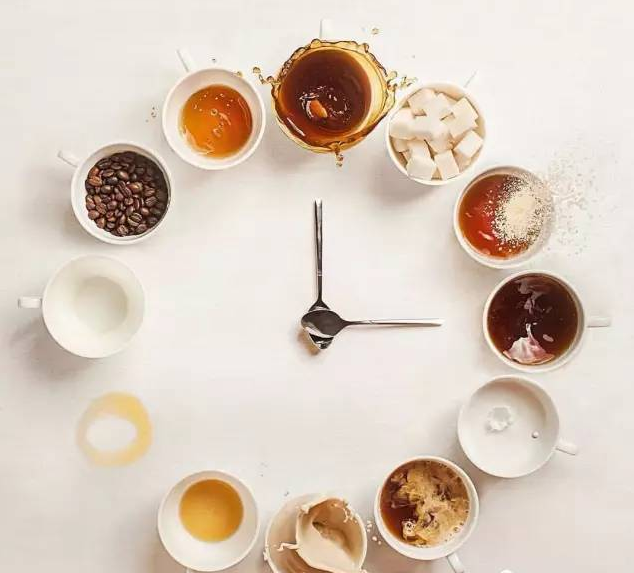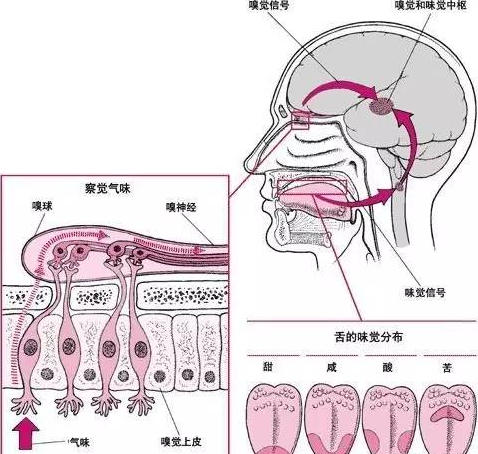Dry distillation of coffee aroma
Follow the caf é (Wechat official account vdailycom) and found that Beautiful Cafe opened a small shop of its own.
If a cup of coffee can have both Mena's floral, fruity and herbal aromas, caramelized nuts, caramel, chocolate and dry distillation to produce a mellow and choking flavor, this is undoubtedly a rare good coffee. so what do you know about the dry distillation of coffee aroma?
When everyone indulges in the sweet and full fruit aroma, bright and fresh floral aroma and sweet nutty caramel aroma, don't forget that there is a special aroma, which those who love it regard as "the apple of my eye". This is what we have to say, the aroma produced by the distillation of "love and hate".

Before introducing dry distillation, let's take a look at the chemical reactions that take place in the baking process.
01
Dehydration process (Dehydration process)
When the coffee beans are put into the furnace to 150 °C, the water of the coffee beans will be lost and the color will change from green to yellow. After entering the first explosion, the dewatering rate will reach about 15%.
02
Hydrolysis (Hydrolyzation)
Hydrolysis occurs when the internal temperature of the bean reaches more than 100 °C to an explosion, and the water molecules react with the bases and acidic compounds inside the coffee bean to form a series of hydrolysates, and the hydrolysates react with each other to form a new acidic solution.
03
Enzyme catalyzed reaction (Enzymatic reaction)
At 150-180 °C, coffee beans produce the most recognizable gases, such as carbon dioxide and carbon monoxide. This is mainly due to a series of enzyme-catalyzed reactions in the decomposition of carbon chains in coffee, and sugars and starches begin to transform into most of the aroma and flavor molecules in coffee.
04
Caramelization reaction (Caramelization)
Caramelization is the "oxidation" and "browning" reaction of sugars when heated. Starting below 100 °C, low molecular weight monosaccharides are polymerized and concentrated, resulting in darker medium molecular weight caramel components that last to about 200 °C.
05
Mena reaction (Maillard reaction)
Mena reaction refers to a series of degradation and polymerization of sugars and proteins in coffee when the temperature is higher than 150C, which darkens the color and produces many important aromatic compounds.
06
Dry distillation (Dry distillation)
Dry distillation means that solids or organic matter are isolated from the air and dried until completely carbonized. The organic compounds in coffee beans are decomposed at high temperature in the absence of oxygen to produce volatile compounds.
Under the combined action of dry distillation and Mena reaction, this stage will produce complex and difficult to retain aromas: Cunninghamia lanceolata, spice, carbonation and other aromas. These aromas may not sound pleasant, but the proper aroma has a great effect on improving the flavor of coffee. In the dry distillation group in the fragrance bottle, these aromas can be clearly reflected:
Cedar Cedar
Clove Clover-like
Pepper Pepper
Coriander seed Coriander-like
Blackcurrant Blackcurrant-like
Malt Malt
Maple syrup Maple syrup
Flue-cured tobacco Pipe tabacco
Roasted coffee beans Roasted coffee
For example, among these aromas, the pungent and warm taste of cloves, the fermenting feeling of malt and the woody notes of cedar will make the coffee strong but not bitter, rich and mellow, making the coffee show a more distinctive flavor and charm.
However, due to excessive dry distillation, mercaptan produces bitter degradation products, masking the unique aroma of Chinese fir, spice and carbonization, and the aroma is not easy to be retained. Therefore, if a cup of coffee can have both the floral, fruity and herbal aromas of Mena reaction, the mellow flavor of caramelized nuts, caramel, chocolate and dry distillation, this is undoubtedly a rare good coffee. it is a great test of the baker's understanding of coffee beans.
Important Notice :
前街咖啡 FrontStreet Coffee has moved to new addredd:
FrontStreet Coffee Address: 315,Donghua East Road,GuangZhou
Tel:020 38364473
- Prev

Coffee produces a variety of aromas in different styles.
Following Cafe Review (Wechat official account vdailycom) found that coffee has opened a small shop of its own. Coffee is blessed with huge and complex chemicals, making every small coffee bean become a huge aroma bomb. Its broad changes and levels require us to keep exploring and discovering. The aroma of coffee is determined by variety, origin, climate, geographical environment,
- Next

What are the senses and coffee flavor?
Following Cafe (Wechat official account vdailycom) found that Beautiful Cafe opened a small shop of its own. What is the sense of sense organ? the magical human body has organs that sense the stimulation of external things: eyes, ears, nose, tongue, body, etc., corresponding to vision, hearing, smell, taste and touch. If you want to have a good cup of coffee, you need at least three senses: smell and taste.
Related
- Beginners will see the "Coffee pull flower" guide!
- What is the difference between ice blog purified milk and ordinary milk coffee?
- Why is the Philippines the largest producer of crops in Liberia?
- For coffee extraction, should the fine powder be retained?
- How does extracted espresso fill pressed powder? How much strength does it take to press the powder?
- How to make jasmine cold extract coffee? Is the jasmine + latte good?
- Will this little toy really make the coffee taste better? How does Lily Drip affect coffee extraction?
- Will the action of slapping the filter cup also affect coffee extraction?
- What's the difference between powder-to-water ratio and powder-to-liquid ratio?
- What is the Ethiopian local species? What does it have to do with Heirloom native species?

